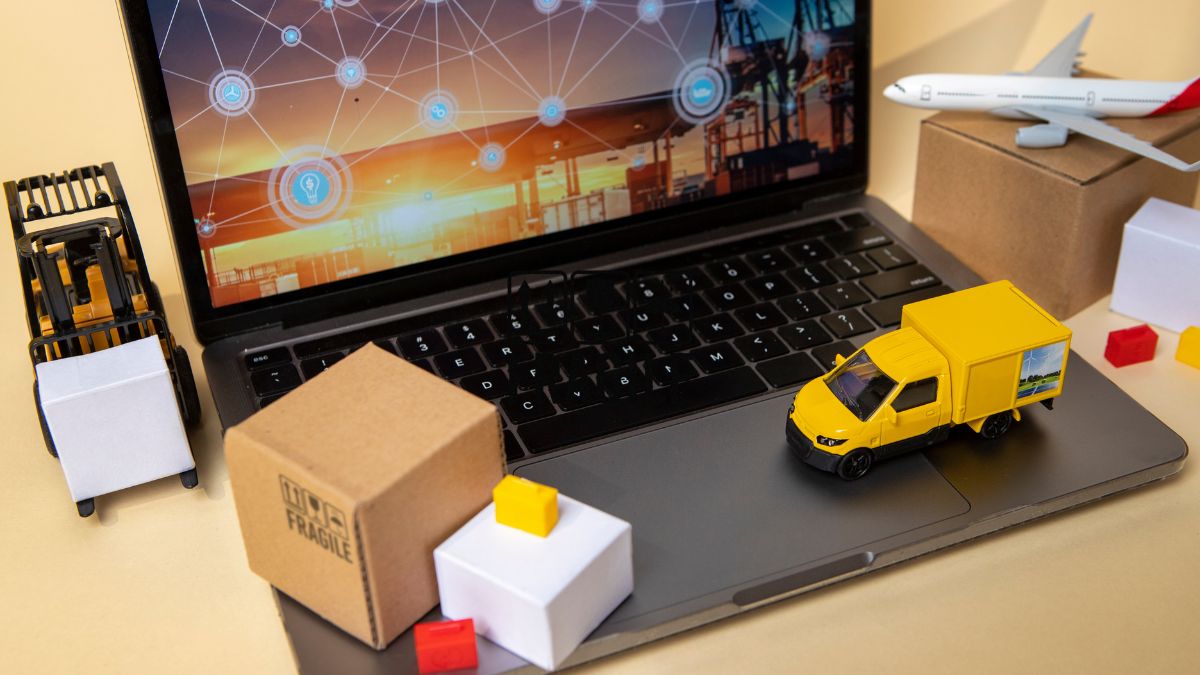Business
Top Business Trends That Will Shape the Future in 2025

The business world is evolving at an unprecedented pace, driven by technological advancements, shifting consumer expectations, and global economic changes. As we step into 2025, companies must stay ahead of emerging trends to remain competitive and thrive in the digital-first economy. From AI-driven automation to sustainability-focused business models, the future of business will be shaped by innovation and adaptability.
In this blog, we’ll explore the top business trends that will define 2025, how they impact industries, and what businesses can do to prepare for the future. We’ll also address some common FAQs about business trends and predictions.
1. Artificial Intelligence and Automation Will Dominate
The Rise of AI in Business Operations
Artificial Intelligence (AI) is no longer a futuristic concept; it is already transforming businesses across industries. In 2025, AI and machine learning will be at the core of decision-making, customer engagement, and operational efficiency.
Key AI Trends to Watch:
- AI-powered chatbots for enhanced customer service
- Predictive analytics for data-driven decision-making
- AI-driven content creation and marketing automation
- Robotic Process Automation (RPA) to streamline workflows
Businesses that embrace AI will see improved productivity, lower operational costs, and enhanced customer experiences.
2. The Future is Remote and Hybrid Work
The Evolution of Workplaces
The pandemic accelerated the adoption of remote work, and in 2025, hybrid work models will become the new norm. Companies will continue to invest in collaboration tools, virtual reality workspaces, and employee wellness programs to support a more flexible workforce.
What This Means for Businesses:
- Increased demand for cloud-based collaboration tools
- More focus on mental health and work-life balance initiatives
- Employers investing in digital infrastructure for remote employees
Businesses must adapt by offering flexible work arrangements and rethinking office spaces to accommodate hybrid teams.
3. Sustainability and Green Business Practices
Why Sustainability is a Business Imperative
Consumers and investors are prioritizing sustainability, ethical sourcing, and corporate social responsibility (CSR). In 2025, businesses that adopt eco-friendly practices will have a competitive advantage.
Sustainable Business Trends:
- Carbon neutrality commitments and eco-friendly products
- Circular economy models (recycling and reusing materials)
- Renewable energy adoption in manufacturing and supply chains
- Sustainable packaging solutions to reduce plastic waste
Companies that integrate sustainability into their business models will attract conscious consumers and regulatory incentives.
4. The Rise of Web3 and Blockchain Technology
Decentralization and Transparency
Web3, powered by blockchain technology, is set to revolutionize industries by providing more transparency, security, and decentralization.
How Businesses Will Benefit:
- Secure and transparent financial transactions (cryptocurrency adoption)
- Smart contracts to automate agreements and reduce fraud
- Decentralized finance (DeFi) disrupting traditional banking
- NFTs (Non-Fungible Tokens) for digital ownership and marketing
Companies that leverage blockchain for secure transactions and data protection will gain a trust-based competitive edge.
5. Personalization and Hyper-Customization in Marketing
Why Personalized Experiences Matter
Consumers expect brands to understand their preferences and deliver tailored experiences. AI and big data will play a crucial role in hyper-customized marketing.
Marketing Trends for 2025:
- AI-driven recommendation engines (like Netflix and Spotify)
- Dynamic content that adapts to user behavior
- Chatbots providing personalized interactions
- Micro-segmentation for ultra-targeted advertising
Brands that leverage data analytics and AI-driven personalization will see higher engagement and conversion rates.
6. The Expansion of E-commerce and the Metaverse
The Digital Shopping Revolution
E-commerce is evolving beyond websites and mobile apps, with virtual and augmented reality (VR/AR) creating immersive shopping experiences.
Trends Shaping E-commerce:
- Metaverse-driven virtual storefronts
- AR-powered try-before-you-buy experiences
- AI-driven voice commerce (shopping via voice assistants)
- Faster delivery with drone and autonomous vehicle logistics
Businesses must invest in immersive technologies to stay relevant in the digital-first economy.
7. Cybersecurity Becomes a Top Priority
The Growing Threat of Cybercrime
As businesses go digital, cyber threats are becoming more sophisticated. Data breaches, ransomware attacks, and privacy concerns will make cybersecurity a top business priority in 2025.
How Businesses Can Protect Themselves:
- Implement AI-driven cybersecurity measures
- Enhance data encryption and cloud security
- Train employees on cybersecurity best practices
- Use multi-factor authentication and zero-trust frameworks
Companies that prioritize cybersecurity will build consumer trust and prevent costly data breaches.
8. The Gig Economy and Freelance Workforce Growth
Why More People Are Turning to Freelancing
The gig economy is expanding, with professionals seeking flexibility, multiple income streams, and remote opportunities.
Key Freelance Trends:
- More businesses outsourcing specialized tasks
- Platforms like Fiverr and Upwork growing in popularity
- Digital nomad lifestyles gaining traction
- Companies creating freelance-friendly policies
Businesses must adapt by embracing on-demand talent and offering project-based contracts.
9. The Rise of AI-Powered Healthcare and Wellness Tech
Technology Transforming Healthcare
Healthcare and wellness industries are rapidly integrating AI, wearable tech, and telemedicine.
Future Healthcare Trends:
- AI-driven diagnostics and robotic surgeries
- Virtual healthcare consultations becoming standard
- Wearable health devices providing real-time insights
- Mental wellness apps powered by AI
Businesses in the healthcare sector must embrace digital health innovations to provide better patient care.
FAQs
1. What industries will see the biggest changes in 2025?
Industries such as AI, healthcare, e-commerce, blockchain, and cybersecurity will experience the most transformation.
2. How can small businesses stay competitive in 2025?
By leveraging AI, digital marketing, automation, and sustainability, small businesses can compete with larger enterprises.
3. Will remote work continue to be a trend in 2025?
Yes, hybrid work models will dominate, with companies investing in flexible work arrangements and virtual collaboration tools.
4. How can businesses prepare for the rise of AI?
Investing in AI-powered tools for customer service, marketing automation, and data analytics will be crucial.
5. What role will the Metaverse play in business?
The Metaverse will revolutionize e-commerce, marketing, remote collaboration, and virtual experiences.
Conclusion
The future of business in 2025 will be driven by AI, sustainability, remote work, Web3, and personalized experiences. Companies that embrace innovation, adapt to technological shifts, and prioritize customer experience will thrive in the fast-evolving landscape.
To stay ahead, businesses must invest in emerging technologies, optimize digital strategies, and foster an agile, forward-thinking mindset. The future is bright for those who embrace change and innovation!
Business
The Versatility and Utility of Concrete Block Forms

Concrete block forms, often called block molds, are essential to contemporary building because of their efficiency, robustness, and adaptability. This article explores various concrete block shapes, their types, benefits, and uses in construction projects, covering their applications from large industrial buildings to residential dwellings.
Types of Concrete Block Forms
There are several varieties of concrete block shapes, each made to accommodate certain requirements and tastes in building. The principal classifications consist of:
Standard Block Forms
These are the most often used varieties for making concrete blocks with uniform dimensions. Since steel is usually used to make them, long-term usage and durability are guaranteed.
Specialty Block Forms
These forms are made to create blocks with certain characteristics or shapes, such ornamental blocks, interconnecting blocks, or blocks with utility channels already in place.
Reusable Block Forms
These shapes are lightweight and manageable since they are made of materials like rubber or plastic. Because of their versatility, they are affordable for modest to medium-sized applications.
Custom Block Forms
Custom forms are designed to meet specific architectural or aesthetic needs, tailored to the unique requirements of each project.
Advantages of Using Concrete Block Forms
Concrete block forms are an essential tool in construction because of their many benefits:
Consistency and Precision
Block forms guarantee that every concrete block is the same size and shape, which is essential for the project’s structural stability and visual attractiveness.
Cost-Effectiveness
These designs allow for the bulk manufacture of blocks, which lowers labor and material costs considerably. Reusable forms not only increase cost savings but also allow for multiple reuses.
Durability
Superior forms ensure that concrete blocks are incredibly strong, weather-resistant, and able to endure a great deal of pressure, which makes them perfect for a variety of building settings.
Flexibility in Design
Architects and builders may experiment with diverse ideas and create distinctive and visually beautiful structures without sacrificing strength and longevity by using customized and bespoke forms.
Efficiency in Construction
By streamlining the construction process and cutting down on the time required for block manufacture and assembly, standardized block shapes are used. Faster project completion times are a direct result of this efficiency.
Applications in the Construction Industry
A broad range of building projects use concrete block shapes, demonstrating its adaptability and versatility:
Residential Construction
Concrete blocks are widely utilized in homes due to their durability, strength, and longevity, as well as their use in fences, walls, and landscape elements.
Commercial Buildings
Concrete blocks are strong and long-lasting, which makes them ideal for use in commercial buildings including warehouses, shops, and offices.
Infrastructure Projects
Concrete blocks play a critical role in infrastructure projects, including the construction of bridges, roads, and retaining walls.
Industrial Structures
Concrete blocks are a durable and reliable material ideal for industrial buildings like factories and storage facilities.
Special Projects
Concrete block shapes can be utilized in various creative and imaginative ways for various specialty projects, including custom landscaping and artistic installations.
Conclusion
Concrete block forms provide unparalleled uniformity, efficiency, and variety, making them a vital tool in contemporary building. Their capacity to create consistent, strong, and affordable blocks has completely changed the way we construct, opening the door for creative ideas and robust buildings. Concrete block forms are crucial for construction projects, ranging from basic home fences to sophisticated commercial structures.
Business
How to Start a Small Business Online (Step-by-Step Guide)

In today’s digital world, launching an online business isn’t just a dream—it’s a realistic and potentially life-changing opportunity. Whether you’re looking to quit your 9–5 job, earn passive income, or build something impactful, knowing how to start a small business online is the first step.
This comprehensive step-by-step guide will walk you through everything you need to know—from finding the right business idea to launching, marketing, and scaling your venture successfully.
Why Start a Small Business Online?
Starting a small business online comes with unmatched advantages:
-
Low startup costs: No rent, utilities, or hefty upfront investments.
-
Global reach: Sell to customers anywhere in the world.
-
Flexibility: Work from anywhere, set your hours.
-
Scalability: Start small, grow big without physical limitations.
-
Automation: Use tools to automate sales, marketing, and customer service.
If you’re serious about building an income stream or pursuing entrepreneurship, learning how to start a small business online is one of the smartest skills you can develop.
Step 1: Identify a Profitable Business Idea
Every successful business starts with a profitable idea that solves a real problem. Start by asking:
-
What skills or hobbies do you have?
-
What problems can you solve?
-
What products do people search for online?
Popular Online Business Ideas:
-
Dropshipping store
-
Print-on-demand products
-
Online courses or coaching
-
Affiliate marketing blog
-
Digital products (ebooks, templates, etc.)
-
Freelance services (writing, design, coding)
Tip: Your idea should sit at the intersection of passion, skill, and market demand.
Step 2: Validate Your Idea with Market Research
Before investing time or money, validate your idea:
1. Check Search Demand
Use tools like Google Trends, Ubersuggest, or Ahrefs to check whether people search for your product or service.
2. Analyze Competitors
Find your top 5 competitors. What are they doing well? Where are they lacking?
3. Look for Gaps
Join forums, Facebook groups, Reddit communities. What are people asking for that they’re not getting?
4. Test with a Survey
Create a free survey using Google Forms or Typeform. Share it in relevant groups to gather insights.
Validation is the key to minimizing risk in your online business journey.
Step 3: Choose a Business Model
Now that you have a validated idea, it’s time to pick your online business model. This will define how you deliver value and make money.
Common Online Business Models:
| Model | Description |
|---|---|
| E-commerce | Sell physical or digital products via online store |
| Dropshipping | Sell products without handling inventory |
| Freelancing | Offer services like writing, SEO, design, etc. |
| Subscription-based | Charge a recurring fee for content or products |
| Affiliate marketing | Promote others’ products and earn a commission |
| Online coaching/courses | Teach a skill or subject to paying students |
Pick a model that aligns with your strengths, budget, and long-term goals.
Step 4: Register Your Business
While starting small might seem informal, registering your business gives it legitimacy and helps avoid legal issues later.
Steps to Register Your Business:
-
Choose a Business Name – Make sure the domain is available.
-
Register a Domain – Use platforms like GoDaddy or Namecheap.
-
Register the Business Legally – Depending on your country, choose a structure (LLC, Sole Proprietorship, etc.).
-
Apply for a Tax ID (if required) – Essential for opening business bank accounts and paying taxes.
Step 5: Build Your Online Presence
You can’t run an online business without a solid digital presence. This includes:
1. Create a Website
Your website is your online storefront. Use platforms like:
-
Shopify – Best for eCommerce.
-
WordPress – Best for blogging and customization.
-
Wix/Squarespace – Beginner-friendly drag-and-drop builders.
2. Design Your Branding
-
Logo
-
Color palette
-
Typography
-
Tone of voice
Consistent branding builds trust and recognition.
3. Set Up Social Media
Start with 2-3 platforms where your audience hangs out (Instagram, Facebook, LinkedIn, Pinterest, etc.)
Step 6: Set Up Online Payment and Fulfillment
To make money, you need a secure payment gateway and delivery system.
Accepting Payments:
-
Stripe (global)
-
PayPal
-
Razorpay/Paytm (India)
-
Shopify Payments
For Physical Products:
-
Set up shipping rates.
-
Partner with logistics companies (Shiprocket, DHL, FedEx).
-
If dropshipping, use tools like Oberlo, Spocket, or DSers.
For Digital Products:
-
Use platforms like Gumroad, SendOwl, or Teachable.
-
Deliver via email or private members’ area.
Step 7: Launch and Promote Your Business
Now that everything is set, it’s launch time!
1. Soft Launch
Share with friends, family, or a small beta audience. Gather feedback.
2. Full Launch
Announce on social media, run ads, and email your list.
Promotion Strategies:
-
SEO: Optimize your site with keywords like “How to Start a Small Business Online”
-
Content Marketing: Write blogs, create videos, offer value
-
Social Media Marketing
-
Influencer Outreach
-
Email Campaigns
-
Paid Ads (Google, Facebook, Instagram)
Step 8: Monitor, Optimize, and Scale
You’ve launched—great! But the real work begins now.
Key Metrics to Track:
-
Website traffic (Google Analytics)
-
Conversion rate
-
Cost per acquisition (CPA)
-
Email open and click rates
-
Customer retention and satisfaction
Tools to Use:
-
Google Analytics
-
Hotjar (behavior tracking)
-
SEMRush or Ubersuggest (SEO)
-
HubSpot or Mailchimp (email marketing)
Scale by:
-
Adding new products or services
-
Running retargeting ads
-
Automating your sales funnel
-
Hiring a virtual assistant or freelancers
Common Mistakes to Avoid When Starting an Online Business
-
Skipping market research
-
Choosing a niche you’re not passionate about
-
Not investing in branding and user experience
-
Overcomplicating the tech stack
-
Ignoring customer feedback
-
Not collecting emails from day one
-
Being inconsistent with content and marketing
FAQs on How to Start a Small Business Online
Do I need technical skills to start a business online?
No. Many platforms are drag-and-drop. You can also hire freelancers for tech tasks.
How much money do I need to start?
Anywhere from ₹5,000 to ₹50,000, depending on your model. Digital products and freelancing are cheaper to start.
Can I start while working a full-time job?
Absolutely. Many online businesses are built part-time and scaled later.
Is it necessary to have a registered company?
Not initially, but it’s recommended as you grow for legal and financial purposes.
What is the easiest online business to start?
Freelancing, affiliate marketing, and dropshipping are among the easiest.
Final Thoughts
Learning how to start a small business online is a game-changer. It opens doors to independence, freedom, and unlimited growth potential. The key is to take it step by step:
-
Start with a strong idea,
-
Validate it,
-
Choose the right model,
-
Build your presence,
-
Market smart,
-
Keep learning and adapting.
Success won’t happen overnight, but with consistency and smart strategy, you can build something powerful and profitable.
So what are you waiting for? Your online business journey starts now.
Business
UnderstandingGPT-44X Amazon’s

Amazon’s GPT-44X is a groundbreaking advancement in artificial intelligence and natural language processing, enhancing language model capabilities and rooted in AI history.
Evolution of Artificial Intelligence in Language Models
Prior to digging into the details of GPT-44X, it is important to comprehend the direction that artificial intelligence is taking in the field of language modelling. Artificial intelligence (AI) has developed throughout time from simple rule-based systems to complex neural networks that can comprehend and produce writing that is similar to that of a person.
Understanding GPT-44X
Amazon developed the cutting-edge language model GPT-44X, also known as “Generative Pre-trained Transformer 44X.” Expanding on the achievements of its forerunners, including GPT-3, GPT-44X pushes the limits of natural language creation and interpretation.
Applications of GPT-44X
GPT-44X has a wide range of applications that cover several use cases and industries. Its ability to create excellent, cohesive writing in a variety of genres and styles makes content creation and generation one of its principal uses.
Additionally, GPT-44X finds use in chatbots and customer service, which offer human-like interactions and effectively handle inquiries. Its capacity to understand context and produce replies that are appropriate for the given situation makes it indispensable for improving user experiences.
Furthermore, GPT-44X is the brains of personalised recommendation systems, which leverage user preferences to promote goods, services, or content based on specific requirements.
Implications of GPT-44X
The introduction of GPT-44X has important ramifications, both favourable and unfavourable. On the one hand, it offers enterprises previously unheard-of chances to boost consumer interaction, simplify processes, and spur innovation.
It also brings up moral questions about algorithmic biases, disinformation, and data privacy. Addressing these ethical issues is critical to ensuring responsible AI deployment as GPT-44X becomes more commonplace.
Advantages and Disadvantages
The ability of GPT-44X to understand context, generate language that sounds natural, and adapt to new tasks with little to no fine-tuning is impressive.Its adaptability and scalability make it a valuable tool for companies looking to improve user experiences and automate procedures.
However, GPT-44X is not without its shortcomings. Data privacy, possible abuse, and bias persistence are concerns that highlight the need for careful deployment and continuous monitoring.
Future Outlook
Going forward, GPT-44X’s future is bright yet difficult. With AI developing at a rapid pace, GPT-44X is expected to be a key component of the intelligent systems of the future. To reach its full potential, though, negotiating the complicated ethical, social, and technical environments will be necessary.
Conclusion
Although it has many and potentially revolutionary uses, its advantages must be used appropriately, which requires rigorous assessment of the ethical ramifications and responsible implementation.
FAQs
What industries can benefit from GPT-44X?
Many diverse domains, including e-commerce, healthcare, banking, and education, can leverage GPT-44X for varied purposes. Any sector depending on language-based communication and content production may utilise the advantages of GPT-44X to increase efficiency and creativity.
How does the GPT-44X compare to previous models?
In comparison with earlier models, GPT-44X has improved natural language creation and comprehension skills. Better training methods and a bigger model size enable GPT-44X to perform better on a range of tasks and domains.
What are the ethical concerns surrounding GPT-44X?
Data privacy, false information, algorithmic biases, and possible abuse are some of the ethical problems of GPT-44X. Transparent governance, strong rules, and continuous research are necessary to address these issues, reduce dangers, and guarantee the responsible deployment of AI.
Is GPT-44X accessible for small businesses?
GPT-44X provides promise for corporations but needs time, energy, and skill. Smaller organisations may use it through bespoke or cloud-based solutions.
















